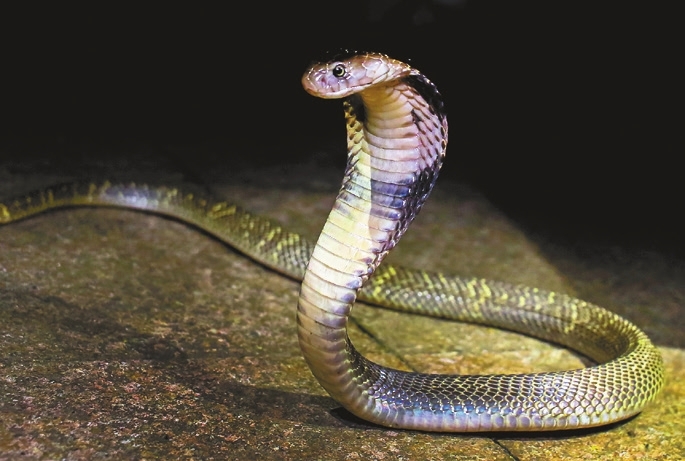
Ever since I was a child, I often heard stories and watched documentaries about snakes where the majestic cobras were the protagonists. As with many other species of animals on our vast planet, I never imagined I was ever going to have the opportunity to come face to face with one of them. Coming from a different part of the planet, half a world away from Shenzhen, I have been treated with plenty of surprises. Shenzhen is home to more than two dozen species of snakes, including the magnificent Chinese cobra (Naja atra), a highly venomous snake with a reputation of being one of the most dangerous in the entire world. This fascinating species has a combination of dark colors like brown or black and in some occasions a pale yellow or cream. Its body length can reach up to 1.5 meters. It will display a characteristic hood on the neck, lift its body, and produce a chilling hiss when feeling threatened. The scene can scare even the most daring human beings. The hood is decorated with a beautiful pattern that resembles a ring on the back of the body, one of the most visible traits to help recognize it. Chinese cobras can be easily found both day and night. When they go hunting for prey like frogs, birds and other small mammals, they attack with a fulminant strike using their front fixed fangs. Then, they inject a controlled amount of venom powerful enough to paralyze and kill their victims in a short time. Cobras’ venom is highly toxic and has been reported to contain proteins that block the nerve cell receptors and stop the heartbeat of their victims as well. However, in spite of the danger they may represent, Chinese cobras aren’t aggressive if left alone and not bothered; their first reaction after being spotted is to flee the scene, or hide underneath a rock or in a hole. The cobra will only show its hood when feeling threatened or cornered; so if you happen to find one, just let it go and never attempt to grab it or bother it. The Chinese cobra is listed as a vulnerable species by the International Union for Conservation of Nature (IUCN), due to their declining numbers and reduced geographical distribution. We are very lucky to have this species in the parks and mountains of Shenzhen, as it plays an important role in the already complex dynamics of our local ecosystems. Let’s work together to conserve their habitats and help protect them, just as we should for all the other beautiful species, for the future of our planet. 2022.05.20 A Chinese cobra is seen on the ground in Fenghuang Mountain in Bao’an District. | 
